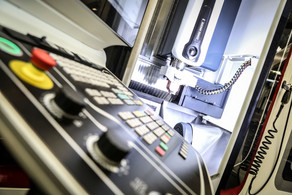Research
Quasi-static load-bearing capacity tests on components to investigate their load-bearing and deformation behavior form a continuous focus in the design field. Another area of research - which has grown steadily in recent years - is the fatigue behavior of components and materials. Here, structures from steel and concrete bridge construction as well as fastening elements are investigated under cyclic permanent loads in order to record the influence of treatment and manufacturing processes on fatigue behavior. The further development of products and their design bases, the strengthening of existing structures are the focus of these investigations.
Major experimental investigations in recent years include:
- Quasi-static cyclic test series to investigate the load-bearing capacity of masonry walls under earthquake action.
- Large-scale tests to investigate the fatigue behavior of prestressing steels (use of laser measurement technology)
- Tests on the shear force bearing capacity of prestressed concrete girders
- Investigations into the load-bearing capacity and fatigue strength of noise barriers on high-speed railroad lines
- Lightweight steel composite construction
- Use of hollow steel plates as decking in steel bridge construction
- High-bay warehouse with higher-strength steels | Anchoring of sandwich panels
- Fatigue strength of dowels and anchor channels used in nuclear facilities
Further development
Parallel to these investigations, the Institute is also constantly developing its test methods in order to be able to realize suitable test conditions for the special test parameters. Thus, some test methods developed at the Institute for Building Research have gained recognition on a national and international scale.
An insight into the research projects with predominantly experimental components is provided by the research pages of the chairs.






